The T’au Empire launches its Sixth Sphere Expansion into 10th Edition with a brand new Codex! Battlesuits reign supreme with the new Retaliation Cadre, while the infantry and Devilfish thrive with Mont’Ka! New forms of Kroot subspecies join their T’au allies as a full fledged detachment with a bag of booby traps!
We’re very lucky to be joined by Art of War’s Richard Siegler, who as a known T’au enjoyer has kindly offered to lead our review, bringing his top-tier T’au insight to the table. He’s been helped out by commentary from Wings (who tends to “appreciate” T’au from the other side of the table) and Goonhammer’s enthusiastic and more casual Fireblades Greg and Vre’kais. There’s a lot of depth to the detachments on offer here, so read on to find out what Richard and our team are most excited about.
We would like to thank Games Workshop for providing us with review copies of the Codex and new Kroot.
Note: As with the Dark Angels and AdMech codexes, the printed points in here have very much not kept up with the twists and turns of 10th Edition so far. For review purposes, we have assumed the current MFM price tags on any existing units, and the printed points for new units (including the replacement datasheets for Crisis Teams).
Army Overview

Richard: This Codex offers two new viable detachments to compete with the Patient Hunter Kauyon detachment that existed in the Index phase. Instead of locking much of the detachment’s power until turn 3, these new detachments allow a T’au army to be much more effective in the critical early turns, even if their late game power is less than Kauyon. Most notably, the new styles will allow T’au players to have a better chance to play into aggressive board control and threat overload armies where the lack of key rules on turns 1 and 2 with Kauyon hindered a consistent and effective answer (Chaos Knights, Orks, World Eaters, etc).
We think the following are five standout features of this book:
- Detachments: This Codex offers two new detachments that are competitive with the Kauyon detachment and allow for a more effective early game T’au army. If you are a Kroot fan, you also get a detachment, but getting to grips with its effectiveness will have to wait until actual Kroot points are released with an updated MFM.
- Retaliation Cadre: Battlesuit lovers will adore this detachment as it rewards more aggressive posturing, with a bonus to S within 12” and a bonus to AP within 6”. It also contains critical tricks in the T’au arsenal like Strike and Fade (for just 1CP), devastating 3.1” away reserve plays, and Starflare Ignition System for returning to reserves with Crisis Battlesuits.
- Mont’Ka: Mont’Ka boosts early game damage by granting ranged weapons Lethal Hits during Battle Rounds 1 to 3, and Assault if the unit is Guided. This is exactly the type of rule that T’au craved against early aggression. The detachment also boasts an incredibly potent enhancement granting T’au Empire models +1 OC on a particular objective for the entire game. Focused Fire returns at a tasty 1 CP for +1 AP on an enemy unit for two of your units. Counter Defense System, while pricey at 2CP, can grant any T’au Empire unit -1 damage.
- Stealth Battlesuits: No longer pale imitations of their gold standard observer, the Tetras, this unit grants reroll 1s to hit and wound as its Observing buff instead of simply the latter. This makes them quite competitive with Tetras since they also do not give up Bring It Down points, and in a Retaliation Cadre they benefit from the S/AP bonuses, being tiny battlesuits.
- Kroot Carnivores: The basic Kroot infantry gain a major datasheet upgrade, giving T’au access to “sticky objectives” for the first time, making one unit practically mandatory for all lists.
Coming up with five things to like was a lot of fun, as there is a lot not to enjoy.
- Crisis Suits: The unit is restricted to three models, and all of the weapon choices are split between 3 different unit options (which can only access two weapons now instead of 3, and cannot choose their support system). The Cyclic Ion Blaster is also completely removed from regular Crisis suits and restricted to only the Commanders. How relevant Crisis suits are will entirely depend on their points in the updated MFM. Kais: Drones saw a big change too with the new datasheets limited to one of each type per suit! Though do remember that the Pulse Blasters on a Gun Drone would benefit in a Retaliation Cadre as they’re equipped to a Battlesuit Model!
- Retired Datasheets: Some beloved units no longer serve the Greater Good. Longstrike, Aun’Va, Aun’Shi, the Crisis Commander, and Tactical Drones, are all removed as options from the Codex.
- When Was This Written?: The Codex must have been written in the early days of 10th Edition as there have been no changes to the many datasheet rules that don’t really fit or are dramatically worse than equivalents in other factions remain the same. The T’au arsenal should also really have seen changes to several weapon profiles, and instead largely takes a nerf to Plasma Rifles and to Missile Drones without any compensatory buffs to weapons that don’t perform the role that they should.
Wings: I’ll echo this – the Necron and (to some extent) AdMech Codexes did a great job of feeling like a “second pass” over units that weren’t quite right in the Index, so it’s unfortunate not to see something similar here.
Where’s Crusade?
You’ll find our review of the book’s Crusade rules this upcoming Tuesday, but don’t expect a lot of surprises. It’s going to look very familiar if you’ve read our 9th edition coverage.
Army Rules
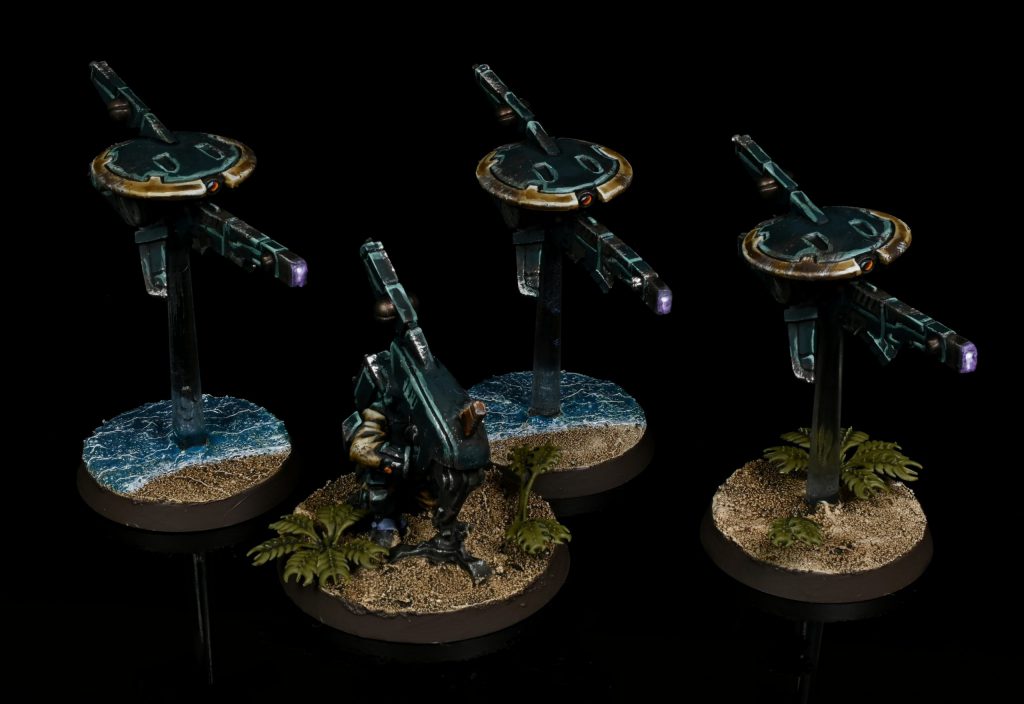
Richard: For the Greater Good remains the same from Index to Codex with T’au Empire units working in pairs to support one another. The observing support unit provides various benefits to the guided unit, always +1 to hit, and Ignore Cover if it has a Markerlight, which is meant to do efficient damage. The -1 Ballistic Skill penalty for a Guided unit shooting at anything except a Spotted target remains, which is a big miss as this fundamentally hurts a lot of T’au units that have multiple different weapon profiles designed to target certain units. Units like the Stormsurge suffer massively as their extra weapons are mostly useless and punished for targeting the non-spotted units they should. Being a modifier to the BS characteristic, and not the hit roll, means that you can’t use Weapon Support Systems to avoid it either.
Detachments
Richard: T’au Empire has access to four detachments, two meant to support most units, and the other two meant to support specific datasheets. Of these we feel that Retaliation Cadre, Mont’Ka and Kauyon are likely to see play among the wider body of T’au Empire players. The Kroot detachment, while flavorful and containing strong rules, is still only supporting Kroot units and those units have nonsensical points costs in the Codex so we must wait to truly judge them until the MFM update is released and hopefully corrects their astronomical cost (you’d think they were Custodes based on these points!).
Wings: As Richard says, a whole bunch of this depends on where the points land, but right now I’m super-hot on Mont’ka, and think there probably is a serious list in the Kroot detachment – it’s got enough overlap with the already successful Unending Swarm from Tyranids (plus some twists of its own) that it’s worth a serious look. Kauyon and Retaliation Cadre definitely have their appeal as well, and I could be being deceived fairly “direct” power that’s there in Mont’ka, but my vibe is that this is going to be one of those situations where the power is both very straightforward and just a bit higher than the others, particularly in light of the changes to Crisis Suits.
Richard: A serious list in the Kroot detachment? That’s a hot take!
Greg: I place 27 Crisis Suits in a Retribution Cadre and shove them forward.
Kais: I like the detachments, though at four there does seem to be room for a Gunships one GW; maybe next time?
Kauyon – Patient Hunter
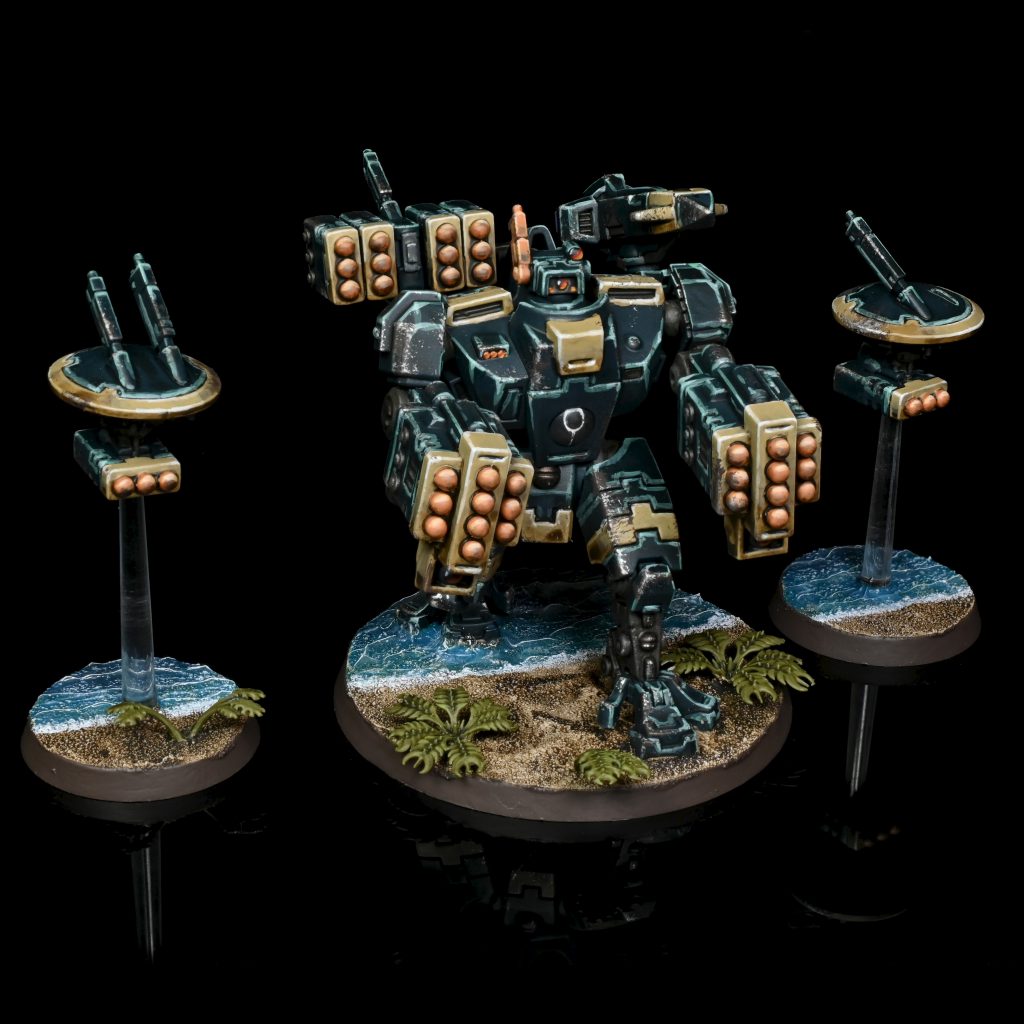
Richard: The tried-and-true Index T’au detachment has been revamped in the Codex with a handful of changes, though in essence it works pretty much the same. It retains its original weakness to aggressive armies that try to decide the game by turn 3, preventing the true late game power of the detachment. But for those T’au players that are adept at screening and delaying enemy forces, you will still gain value from it.
Detachment Rule
The detachment continues to grant Sustained Hits 1 starting in battle round 3, which is upgraded to Sustained Hits 2 but now it’s when targeting the unit’s Spotted unit, rather than when Guided.
Kais: This represents a functional change from the previous version, allowing Observer units to benefit from the rule (as they share the “Spotted Unit”), but meaning that Guided units only get the benefit for attacks they make into their Spotted target. On balance I think this is a slight upgrade as it gives the half of your army that is observing access to the buff.
Enhancements
Exemplar of the Kauyon: This allows the detachment benefit on the model’s unit to kick off from Battle Round 2 rather than Battle Round 3, and it’s the only way to achieve that. While still good on a Cadre Fireblade in a Breacher Team or a Commander in a Crisis unit, it is not quite as auto-take now that you cannot take 6-model Crisis units.
Precision of the Patient Hunter: This is a buff for a model’s own weapons, giving them +1 to Hit all the time, and +1 to Wound from Battle Round 3 onwards. This remains a fantastic enhancement for a T’au Commander, whether a solo model or joined to a unit of Crisis suits.
Solid-Image Projection Unit: The only new enhancement to this detachment, replacing the Puretide Engram Neurochip, which moved to a new detachment. This one grants the T’au player a pre-game redeploy of up to the 3 T’au Empire units, which can include placing them into strategic reserves. Unfortunately this is not the best version of this rule, which allows the redeploy to happen after knowing the first turn roll off, so it will have limited utility for top players. It can be useful as you’re trying to improve as a T’au player, as it allows you to correct deployment errors, which can be particularly backbreaking for T’au.
Through Unity, Devastation: This grants lethal hits to the guided unit when the bearer’s unit acts as an Observer. Its biggest downside is it is competing with the excellent observer benefits that Tetras and Stealthsuits provide. It also forces you to spend points on a character that can lead, the enhancement itself, and a unit that is being led.
Wings: Agree, this is still weirdly clunky to use, and it’s still very odd that it doesn’t work on a Firesight Marksman.
Stratagems
A Tempting Trap (1CP) (Battle Tactic): Used in your shooting phase. Select one T’au unit or an objective marker not in your opponent’s deployment zone; this becomes your trap objective. Until the end of the phase, each time a model in your unit makes a ranged attack that targets an enemy in range of this objective, +1 to wound (can’t be used battle round 1 or 2).
This is quite a solid stratagem granting a powerful buff, but its restrictions prevent it from being used early game when killing durable units on objectives is critical.
Photon Grenades (1CP): The same as previous, with the restriction that it cannot target a unit while it is in engagement range of any enemy units. This means if the opponent charges a cheap nonsense unit into your Breacher Team, you can’t then use Photon Grenades if an important unit then charges the same unit. Still a very solid stratagem for disrupting charges into many of your most important infantry units.
Wall of Mirrors (1CP) (Battle tactic): Another new stratagem for the detachment, used at the end of the opponent’s fight phase. You target a Stealth, Ghostkeel, or Commander Shadowsun unit, remove it from the battlefield, and place it in reserves (as long as it wasn’t in engagement range of any enemy units).
Once again a solid redeploy stratagem that helps with late game mobility, but not necessarily on the strongest damage dealers. This will be useful to reposition Shadowsun to a new area of the board you control through reserve plays, or to reposition observers such as Stealthsuits to a new firing lane.
Wings: I particularly like this on Ghostkeels; they’re a very chunky unit to be able to redeploy so freely.
Point-Blank Ambush (boosted AP up close), Combat Embarkation (hit the bricks into a Devilfish when charged) and Coordinate to Engage (essentially letting a Spotter unit get the FtGG buff too)remain the same as the Index.
The biggest change here is the loss of Strike and Fade and Stim Injectors, both of which moved to a different detachment. This loss will be felt, as outside of those two stratagems everything else here is highly situational and not something you will be using nearly every turn, especially as A Tempting Trap and Point-Blank Ambush, the two best stratagems to elevate T’au damage in this detachment, have battle round restrictions.
Wings: I think that’s a sharp observation – there’s not that much you’re going to want to do with your CP early on, and losing both the durability boosts is a bit of a pain, especially as it reduces your ability to get stuff through to turn 3!
Mont’Ka
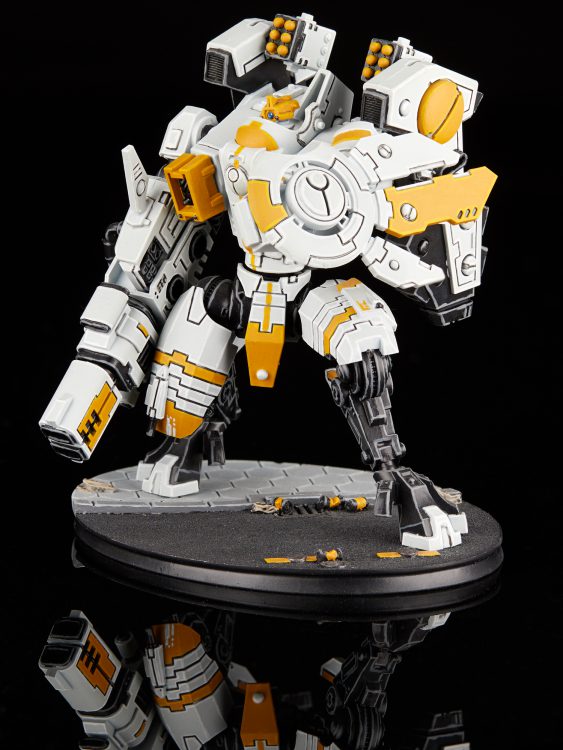
Richard: Unlike the Kauyon detachment, the Mont’Ka detachment rewards using your important resources in the early game, a much-sought after alternative. I think this detachment and the subsequent one will be important in raising the T’au win rate for the non-experienced/veteran players, as they will fit more naturally with how a lot of Warhammer 40k is played, which is that games often end by turn 3 with a clear winning advantage for one player. In those situations, Kauyon is almost entirely irrelevant and actively detrimental to efficiently defending against aggression. While not quite as flashy as Sustained Hits, Lethal Hits are a solid boost to T’au damage, especially considering how few efficient dedicated anti-tank weapons exist in the Codex.
Wings: I’d also highlight that unlike Sustained Hits, Lethal Hits army-wide means that any source of full hit re-rolls helps you overcome high toughness targets as well. If you’re wounding on 6s, it starts becoming worth full-fishing on the hit if you’re hitting on a 3+, which you can often accomplish with For the Greater Good.
Detachment Rule – Killing Blow
Richard: During the 1st, 2nd, 3rd battle rounds, ranged weapons have Lethal Hits. Additionally, while a unit is Guided its ranged weapons have Assault as well. Mobility and additional efficiency against durable enemy units? Solid. This detachment also means that Coldstar Commanders are not mandatory if you take Crisis suit units to gain extra mobility, especially considering they no longer add 6” to their movement characteristic when advancing, which is reinforced by the Aggressive Mobility stratagem.
Wings: Worth highlighting that there’s a bit of a flaw with this detachment ability as worded – while being Guided gives your weapons Assault, you can’t be selected to shoot if you Advanced and have no Assault Weapons, and you aren’t Guided till after you’re selected. This is very unlikely to be intentional, and will hopefully be tidied up in an FAQ, but until then make sure you know how your TO is ruling it, and if necessary bring a Gun Drone in Crisis Teams so they have at least one Assault weapon.
Enhancements
Exemplar of the Mont’ka: While the bearer is leading a unit the Killing Blow detachment rule applies to Battle Round 4. Fairly mediocre as T’au no longer have big units of Crisis suits that would take most advantage of this. Sure, Breacher Teams with a Cadre Fireblade might make solid use out of this, but likely not necessary.
Strike Swiftly: At the start of the battle, before any moves are made using scout, select 2 T’au units within 6″ of the bearer that do not have scout. They gain Scouts 6″.
Pathfinder Teams in Devilfish were one of the better ways to aggressively posture Devilfish while using the scout move to ensure their safety from turn 1 damage. Being able to use Breacher Teams in Devilfish instead while having the Pathfinder infiltrate midboard is a useful new option.
Similarly, other units like Riptides or Broadsides actually gain quite a bit of early game mobility when combined with this rule to threaten firing lanes in combination with assault from Mont’Ka.
Wings: The lack of keyword restrictions on this seems wild to me, and I expect this to turn up in pretty much every list. It just gives you so much flexibility.
Strategic Conqueror: At the start of the first Battle Round, before the first turn begins, pick one objective marker. While a friendly T’au model is within range of that objective, and the bearer is on the battlefield, grant +1 to that model’s Objective Control characteristic.
This is a very solid enhancement that makes it very easy for a T’au player to contest or control a particular objective throughout the game without over dedicating resources. Obviously, Breacher Teams going to OC3 per model is outstanding, but making a Devilfish OC3 can be extremely valuable to prevent a simple OC2 model from contesting an objective away.
It also means that when a unit is battle-shocked on that objective, you reduce their OC to 0 first, then add the +1 thanks to the rules commentary clarification, which isa powerful interaction against Tyranids and Chaos Knights.
It also doesn’t exclude Kroot so Kroot Hounds will appreciate this, especially if you aren’t running any Kroot characters.
Coordinated Exploitation: While the bearer is leading a unit, each time that unit is an observer unit, until the end of the phase, ranged weapons equipped by guided models have sustained 1. This enhancement has similar weaknesses to Through Unity, Devastation, but if you’re already taking a Fireblade and have extra points it is an okay alternative to other options, especially if taking Shadowsun.
Stratagems
Pinpoint Counter-Offensive (1CP) (Battle Tactic): Any phase. Target a non-Kroot T’au Empire unit that was just destroyed. Until the end of the battle, non-Kroot T’au units get reroll hits against that enemy unit.
This is quite a strong stratagem, and one that limits the necessity of running up to 3 Tetra units. T’au have a lot of disposable trade pieces that aren’t Kroot, such as Piranhas, Devilfish, Breachers, Stealth suits, and many more that can require a damage dealer to kill, especially Devilfish and medium-sized vehicles. The fact that it’s any phase and not restricted to “destroyed from attacks” means that grenades killing a unit, or a tank shock in the charge phase won’t prevent that enemy unit from activating this stratagem.
Wings: Agree; this seems incredibly good, and again I’m very surprised that there are no keyword limitations here. It’s very tricky for opponents to avoid triggering this, and there’s always going to be a bit of variance even if they smartly play around it, so I’d expect to see great value from this one.
Aggressive Mobility (1CP) (Battle Tactic): This is the money stratagem. In a detachment where you can easily gain assault, a stratagem to gain +6” movement when advancing dramatically increases the power of slower guns like Broadsides. Additionally, the guaranteed plays you can conjure to score points with this stratagem can be game winning. Whether cheap alien auxiliary or critical damage dealer, this stratagem opens up plays. This stratagem will be used almost every single turn in this detachment.
Greg: It sucks that Crisis suits lost the auto-6” advance as an innate ability, but having it here and available to any unit at all easily makes up for that. It’s also a Battle Tactic so feel free to use it twice if you have Farsight.
Focused Fire (1CP) (Battle Tactic): Another great stratagem in this detachment. At the start of your shooting phase, you select two T’au Empire units and one enemy unit, and your selected units gain +1 AP against that target (at the cost of having to target it with all their attacks). It cannot be used in Battle Rounds 4 and 5, but that is much better than not being able to do so turns one and two.
Wings: Big tick from me; this is great with missile pod Fireknife Crisis Teams, who already have strong synergy with this detachment thanks to access to built-in hit re-rolls.
Combat Debarkation (1CP) (Battle Tactic): In your shooting phase, one T’au unit that disembarked from a Transport this turn and targets the closest enemy unit can reroll wounds.
While Breacher Teams already provide reroll wounds against enemy units on objectives, the real use of this stratagem is to help Pathfinder Teams punch up with or without Darkstrider inside. Especially when combined with the Strategic Conqueror objective, Pathfinders Disembarking can put out significant damage with this stratagem and also become OC2. It’s also a way to allow Breacher Teams with a Fireblade to do fantastic damage into targets not on objectives.
Pulse Onslaught (2CP): Used in your shooting phase. You pick one T’au infantry unit – excluding Kroot – that just shot, and one enemy unit (non vehicle/monster) hit by one of those attacks. Until the end of your opponent’s next turn, that enemy is shaken and is -2 to their movement, and advance and charge rolls. This is quite pricey for such restricted utility, but can be powerful against certain slow moving and durable enemy infantry units.
Counter Defense Systems (2CP): Used in your opponent’s shooting phase after the enemy unit selects targets, you can pick one T’au Empire unit (no restrictions!) and gain -1 to the damage characteristic of enemy weapons. While expensive at 2CP, this is quite a durability boost to a Ghostkeel, Riptide, Devilfish or other vehicle chassis.
Also, one thing to note is that four of the six stratagems are battle tactics, which lends additional power to Commander Farsight’s new datasheet rule to make a stratagem free once per battle round.
I think this detachment meshes very neatly and powerfully with the board control style of T’au I had designed for the WCW meta and still favor.
Retaliation Cadre
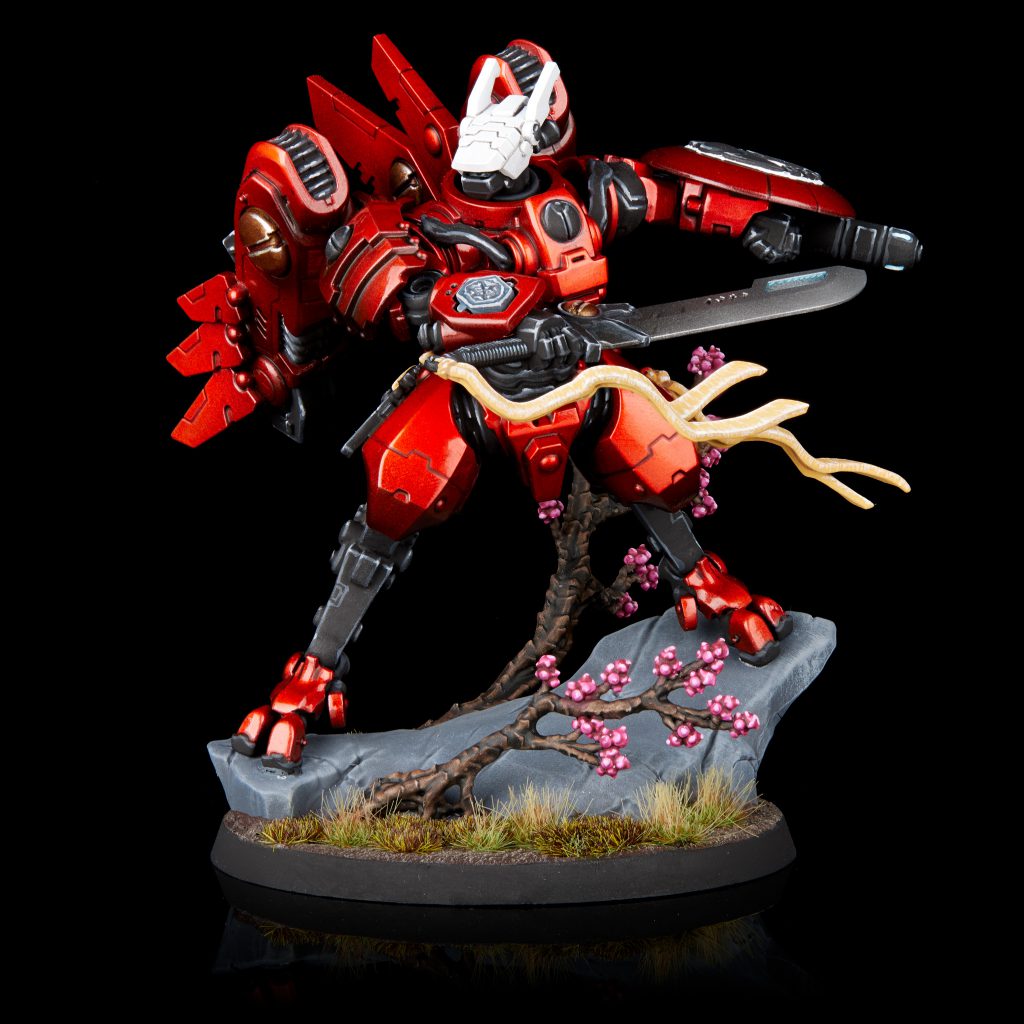
Richard: It’s the Farsight Detachment. If you like aggressive T’au with a lot of battlesuits and a big bag of tricks, you now have the perfect detachment. While the power of the Mont’Ka detachment will be more subtle for those who prefer T’au damage, this detachment is raw power in my opinion.
Wings: I’m a little less hot on this – with the reduced size of Crisis units I don’t think the tools here provide as much of a lift as they need to, and the boosted S is only going to be better at punching up than Lethal Hits in fairly niche situations. It’s still clearly fine, and I think the internal balance between the three non-Kroot detachments here is pretty good, but I wouldn’t be completely surprised if this ended up in third place among them.
Detachment Rule
The detachment rule here is Bonded Heroes. Each time a T’au battlesuit model makes a ranged attack that targets a unit within 12″, it gains +1 strength. If the target is within 6″, the attack also gains +1 AP.
Right off the bat, the detachment rule encourages aggressive play, or at least rewards your units against an aggressive opponent. The breakpoints are significant, too: Fusion goes from strength 9 to strength 10. The Ion Accelerator and Cyclic Ion Raker from S8 to S9, and Cyclic Ion Blaster on Commanders gain the same boost to S9 and up to AP-3. Burst Cannons can get to S6 AP-1.
Unlike Kauyon and Mont’Ka, the detachment buff will remain with your army the entire game, though it is restricted to battlesuits.
Greg: I am living for this detachment, and the fact that forward-deployed Stealth Suits can benefit from the S and AP bonuses is going to make me act unwise with them.
Enhancements
Puretide Engram Neurochip: Battlesuit model. Once per turn, if you target the bearer with a stratagem, you can do so even if you used it already elsewhere. As in the index, it doesn’t make a stratagem cost 0 CP, so the utility is somewhat limited. Not to mention that there is only one battle tactic stratagem in this detachment, and it’s highly situational. Almost entirely useless until the dataslate rule forcing doubling-up stratagems to be battle tactics is adjusted.
Starflare Ignition System: Battlesuit model. At the end of your opponent’s turn, if the bearer is not in engagement range you can remove it and place it into strategic reserves. This is amazingly powerful and its full potential will only be understood once we see the true points on the 3-man Crisis suit units. If they remain overcosted then it may not see play, but if they are appropriately costed you will likely see a Commander with this enhancement and a unit of Crisis in most Cadre lists.
Internal Grenade Racks: Battlesuit model. Bearer gains the Grenades keyword, and each time the bearer ends a normal move you can select one enemy unit it moved over and roll 6d6, with each 4+ dealing a mortal wound. This might be the strongest enhancement in this Codex. A Commander with this enhancement can make a normal move over an enemy unit, dealing mortal wounds. It can then throw a grenade, shoot with its normal guns, and then use The Torchstar Gambit to do another set of mortal wounds to an enemy unit on the way out, ideally getting back behind terrain. We expect this to be an auto-take.
Prototype Weapon System: Battlesuit model. Each time the bearer is selected to shoot, pick either Sustained Hits 1 or Lethal Hits, for all their equipped weapons. A solid upgrade for a Commander, as it can be used in the shooting phase and again in Overwatch.
Stratagems
Failsafe Detonator (2CP): Any phase, after a battlesuit is destroyed. Before removing it from play, choose the Deadly Demise roll to be either a 1 or a 6. If the model doesn’t have Deadly Demise, on a 4+, each unit within 6” takes d3 mortals.
At 2CP this will be rarely used, considering how good the other stratagems are. But an auto-explode stratagem (that can even be used on units that can’t explode normally) is a fun trick to have in your back pocket, to ensure something critical is finished off. The other side of this – forcing a 1 to make sure that a Stormsurge parked in the middle of your army doesn’t explode and shower everyone with mortal wounds – is somehow even more situational, but could be an absolute life-saver in rare circumstances.
Stim Injectors (1CP): During the enemy shooting phase or the fight phase, give a Battlesuit unit a 6+ Feel No Pain. Same as before, but in a new detachment. Will see play from time to time to make sure a battlesuit survives.
The Shortened Blade (2CP): Your movement phase. A T’au empire battlesuit unit arriving via Deep strike can do so more than 3” away from enemy units, but cannot charge.
One of the strongest archetypes of stratagems in the game, and combines amazingly well with Starflare Ignition System to threaten it throughout the game, thanks to the rule commentary allowing units in strategic reserves to use deep strike instead if they have it.
The Arro’kon Protocol (1CP) (Battle tactic): Your shooting phase. One battlesuit unit that targets an enemy unit with 6+ models gains Sustained Hits 1, or if 11+ models Sustained Hits 2.
There aren’t too many large units at the top of the meta nowadays, but even sustained 1 against a 6 model unit like the Bolter Discipline Eradicator brick or 5 Wardens with a Blade Champion can be useful. This is the only battle tactic in this detachment, and so is the only stratagem that interacts with Farsight’s new datasheet rule.
The Torchstar Gambit (1CP): Your shooting phase. Target one T’au Empire Battlesuit unit with FLY who has resolved attacks. If it’s not within engagement range, it can make a normal move, but cannot charge.
Absolutely amazing, and going to be central to the CP expenditure of this detachment. Whether used on the Internal Grenades Commander or other units, at 1CP you will always be using this, even just for extra mobility.
Wings: In some ways I think this is a small compensation for the changes to Crisis Teams – you can at least price Stratagems like this at 1CP now.
Grav-Inhibitor Field (1CP): Your opponent’s charge phase, when a T’au battlesuit is selected as the target of a charge. The Enemy unit has to take a battleshock test, and you roll a d6 for each model in the enemy unit. For each 6, they suffer 1 mortal wound.
Not nearly as good as the Photon Grenades stratagem where the -2 to charge will generally be much more impactful than mortals on 6s. Likely to be rarely used, with much better stratagems in the detachment.
Kroot Hunting Pack
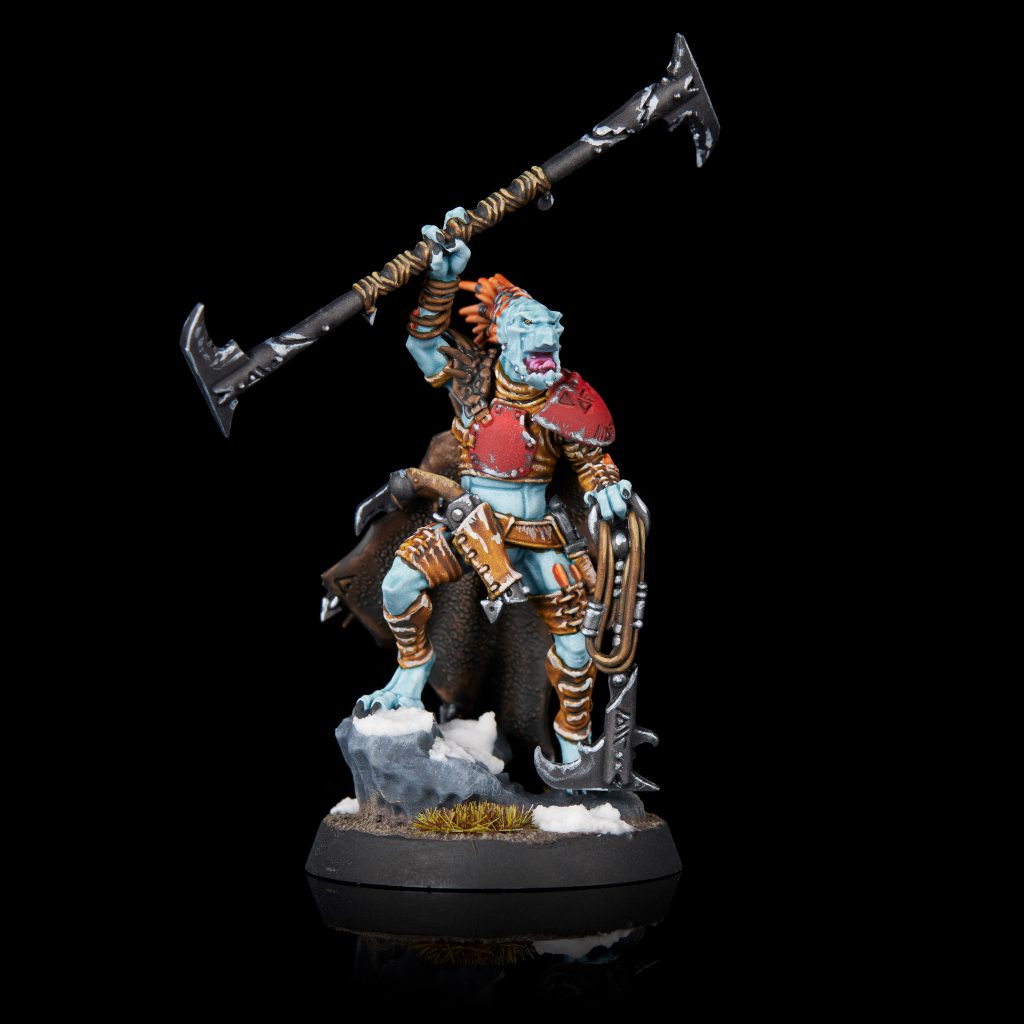
Richard: These are some of the best rules that Kroot units have ever received access to in the history of Warhammer. There are a lot of tricks here alongside synergy that enhances what the Kroot datasheets can do. However, at the end of the day, they are still Kroot and this detachment allows for a mission play focused playstyle, but the killing power will still largely be lacking against tougher targets. And as mentioned previously, the Codex points for the Kroot units that don’t exist in the current MFM are so astronomically high that until we get the updated MFM, it’s hard to truly judge what the Kroot will be capable of in 10th.
With such a limited roster, even with the new units, I feel like this should have instead been a supplementary set of rules you gain access to for Kroot models when you run a certain amount or configuration of their datasheets in a T’au Empire list.
Wings: I’m going to dissent here (or at least, be a lot more bullish prior to seeing points) – we know that Unending Swarm works in serious play, and this gives a lot of the same energy. Kroot have built-in mobility and utility abilities, and slapping a 5+ Invulnerable Save on them army-wide gives them a healthy amount of durability to work with. Add access to a unit recycle and a lone-opiffication stratagem, consistently great wherever they appear, plus mix in Sky Rays and Ghostkeels to sit in the Exocrine role from Unending Swarm, and I think you’ve got a serious army if the points stay anything like what they are in the current MFM.
With that in mind, I’m taking the wheel for this one.
Richard: Please do, you have far more faith in this than I do! The base profiles on the datasheets are so anemic even with the buffs they can receive that all the heavy lifting will be done by the non-Kroot datasheets you might bring. This new Kroot roster is still incomplete even with reasonable points. Where’s the Greater Knarloc? Something to bash durable units and tanks?
Detachment Rule
Kroot get two detachment rules – the always fairly disappointing “+1 to hit against enemy units below Starting, +1 to wound below half,” and the anything-but disappointing addition of a 5+ Invulnerable Save against shooting for all Kroot units, dropping to 6+ in melee. This is the real draw of the detachment, and the fact you get the hit and wound boosts as well lets them sit in a “nice-to-have” space. It’s worth saying that there’s nothing in this entire detachment that does anything for non-Kroot units, so you need to be going hard on them, but there are a few shooty units in the book like Fireknife Battlesuits and Sky Rays that have access to built-in re-rolls, so adding a few of those as support seems plausible.
Enhancements
We start with an auto-take here from Kroothawk Flock, which gives the bearer Ignore Cover and prevents enemy Reinforcements setting up within 12” of them. If you are running this detachment, you take this on a Kroot Lone-Spear 100% of the time, a 12” bubble on a large-based Lone Operative is an incredible pain for opponents to deal with.
The other three enhancements are each locked to one of the three Infantry Characters. For Trail Shapers you get Nomadic Hunter, giving their unit +3” Move and Assault on their weapons. Kroot aren’t exactly about big shooting output, but this does have the effect of allowing the unit to throw Grenades or perform an Action after advancing, and combines with the Trail Shaper’s built-in ability to make the unit move when the enemy comes near to create a super flexible board control/utility piece, exactly what this detachment wants to be doing. It seems very likely that you want this on a 20-model Karnivore unit most of the time.
Next up is the War Shaper, who gets Root-Carved Weapons, making all their equipment Precision and Devastating Wounds. I’ll spare you the read forward – yes they have a weapon that has good synergy with this, the Dart Bow and Tri-Blade, which is d3+1 shots, D2, and crucially has Anti-Infantry 3+. Still super high variance, as the Shaper only hits on 4+ at range, but this is very cheap at 10pts (and Enhancement costs have usually stayed the same as printed), so a fine add-in (don’t forget you can tee up hit re-rolls with a Lone-Spear as well.
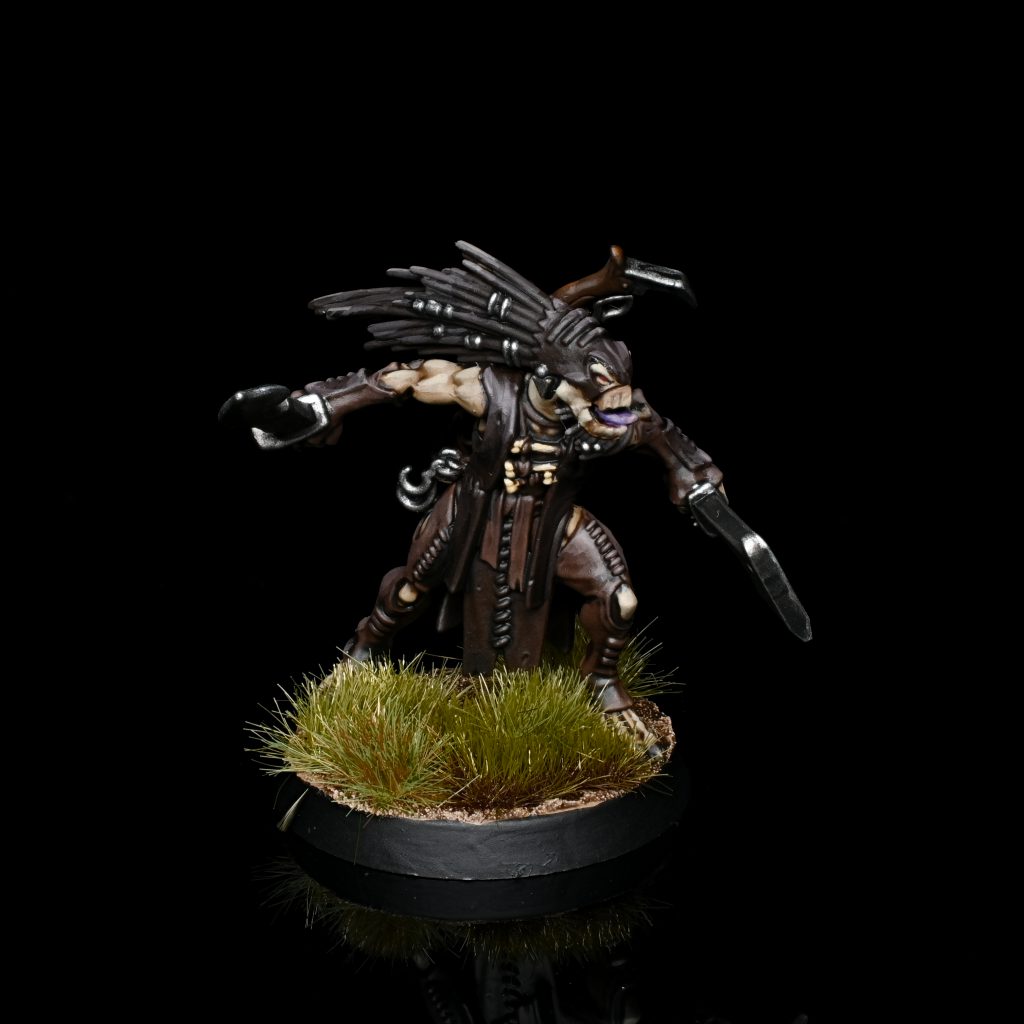
Finally, the Flesh Shaper gets the Borthrod Gland, granting Critical Hits on a 5+ in melee (to go with the Sustained Hits they grant normally). I’m going to be real here – even with this active, Kroot are only killing other chaff in melee, so it’s very skippable, and probably the least useful of the three.
Stratagems
The two most important ones here, as mentioned up top, are Join the Hunt to recycle a Kroot INFANTRY or Kroot Hounds unit that was just destroyed, and Hidden Hunters to make a unit unshootable outside 12”. Both of these are ultra-valuable to support dominating Primary scoring, and the latter also works more widely on stuff like Rampagers, so if they get corrected down to a cost where they’re reasonable, a unit of them for counter-charges becomes an interesting prospect.
Further assisting with Primary domination are Guerrilla Warriors and The Grisly Feast. The former is your standard Fall Back/Shoot/Charge stratagem, great at keeping your options open (and maybe re-setting Rampagers to deal more Mortal Wounds), while the latter is a fairly interesting Battle-shock trick. You activate it after destroying an enemy unit in melee, and then in the opponent’s subsequent Command Phase, all their units that are within 6” of your unit have to take a Battle-shock test at -1, regardless of their current strength (though they don’t have to take a normal test as well). This is a very cool bit of design, finding a way to implement a Fight-triggered Battle-shock that isn’t rendered irrelevant by timing. As mentioned, Kroot still aren’t great in melee, but this can be punishing for enemy chaff. There’s also an interesting fringe subtlety – this triggers in either Fight Phase, but the Battle-shock tests always come during the Opponent’s next Command Phase. That means if they make the foolish mistake of losing a unit to an ongoing melee in their turn, you can then move your now super scary squad to maximise the impact of this before the payoff!
Next, we have a pretty good offensive Stratagem in A Trap Well Laid, which helps Kroot push a bit of damage through. You use this after hitting an enemy unit in the shooting or fight phases, and for the rest of the phase all other Kroot units get +1 to AP against the target. This helps get some actual chip damage from rifles or melee, and is particularly good if you tee it up with a Lone-Spear so you’ve got hit re-rolls as well. Alternatively, this is a Battle Tactic, so a great place to use the War Shaper’s free Stratagem.
Finally, you get EMP Grenades, which you can activate when an enemy VEHICLE near a KROOT GRENADES unit is chosen to shoot or fight, and reduce their WS/BS by 1 for the phase. This is surprisingly relevant, as because it changes stats rather than modifying the roll it does stack with the built-in Stealth that most Kroot have, allowing you to substantially mitigate the ranged output of a key foe in a pinch. I expect you’ll mostly want your CP elsewhere, but I can definitely visualise this coming in clutch in a knife-edge situation.
Datasheets
The vast majority of the datasheets are the same as they were in the index, with two major exceptions. Crisis suits were jiggled entirely, and there are about a dozen more Kroot units than there used to be.
New Datasheets
In addition to the classic Carnivores, Hounds and Farstalkers, Shapers have now been split into three different flavours, Krootox Riders get a glow-up to go with their new models, and there are two new Mounted options alongside them.
Starting with the Shapers (all of whom have Infiltrators, Stealth and Scouts 7” and can join either Carnivores or Farstalkers), the “classic” Shaper is now a War Shaper, getting some slightly improved weapon options and bequeathing a free Stratagem per Battle Round, plus a once-per-game automatic un-Battle-shocking for a nearby Kroot unit. Kind of whatever outside a Kroot Hunting Party, but you probably do want one there. The Kroot Flesh Shaper is also kind of whatever, providing Sustained Hits 1 in melee and a 6+ Feel No Pain, improving to 5+ if you kill something in melee. Slightly ups your durability, sure, but probably not enough to be worth it unless that’s stacked on top of the 5+ Invulnerable Save from the detachment.
The big money here is the Trail Shaper, who gives two great abilities. Kroot Ambush lets you do a post-rolloff Redeploy for the Trail Shaper’s unit and one other Kroot unit, while Trail Finding lets you move d6” when the enemy ends a move within 9”. Putting this kind of Redeploy on a datasheet instead of as a Detachment payoff seems wild, especially when Kroot all either Scout or Infiltrate, and if Farstalkers are anywhere near their current MFM price tag once the points land you almost certainly start most lists with one of these and two squads of Farstalkers, the utility is off the charts.
Our last Character entry is also our first Mounted model, the Kroot Lone-spear. Unsurprisingly given they’re riding a giant chameleon, they’re a Stealth Lone Operative, and can either bring spears (throwing and melee) or a big sniper rifle to pester the enemy with. When they hit a target with a ranged attack they tee up full hit re-rolls for other Kroot against them for the rest of the turn, which can maybe allow Farstalkers to assassinate their chosen target if you time it right, but is mostly a nice-to-have. Much more usefully, they get to Fire and Fade (not me paraphrasing, it’s literally called that) after shooting, making them a potent positional piece. Putting my marker down that in 11th Edition Fire and Fade X” is going to be a core ability. On paper there’s a lot to like here, but right now the price is so high (110pts) that you’d only really look at one in the Hunting Pack to carry the Kroothawk Flock. Knock these down to 70-80pts though and taking one starts to look interesting.
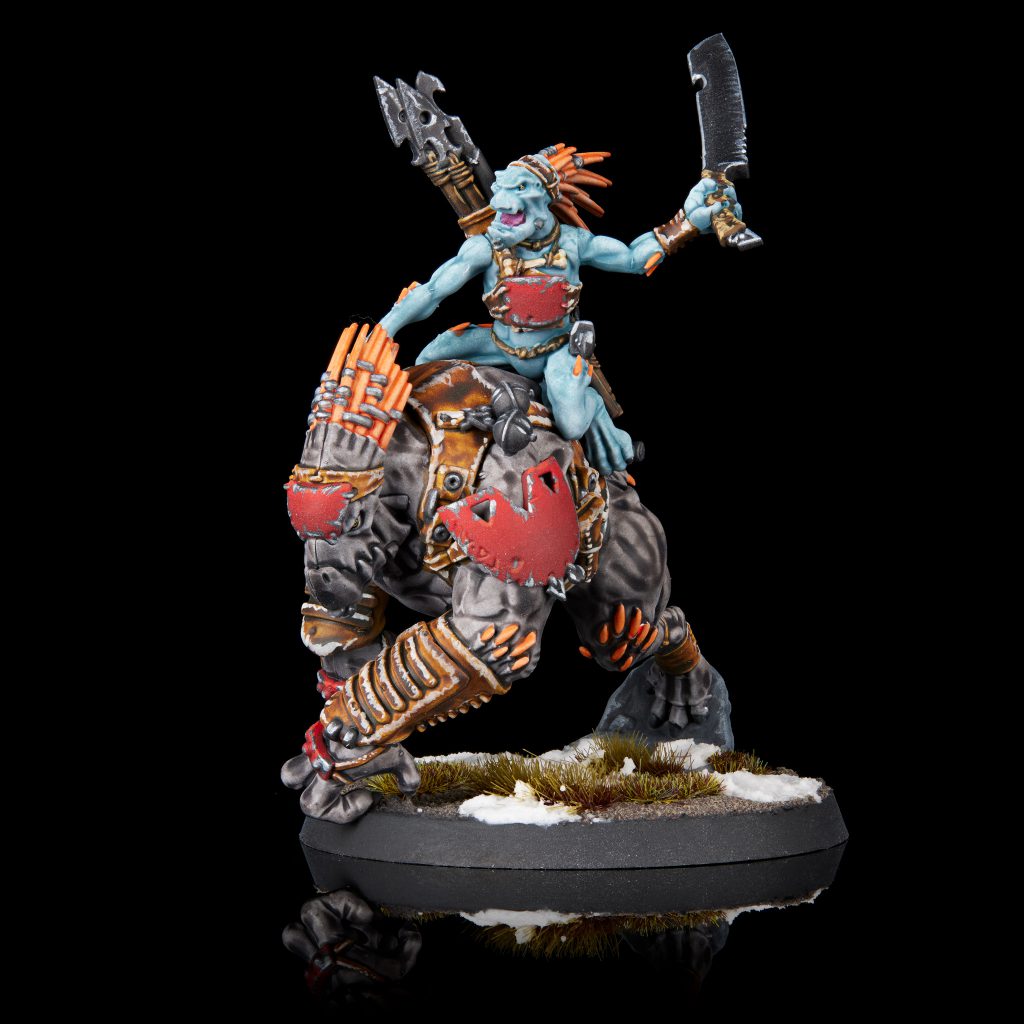
Beyond the Lone-Spear, Kroot Cavalry now comes in shooty and melee flavours. Krootox riders now have two guns to pick from (though you likely stick to the classic gun, which is pretty decent now) and much better statlines in general, plus the ability to shoot back when an enemy shoots at your nearby Infantry. Unlike a lot of the rest of the stuff here these are pretty cheap, so while they’re never going to be a main damage dealer, taking a solo one (currently 40pts) to play a Lokhust Destroyer role of sitting on an objective seems fine. For melee, Krootox Rampagers come in squads of 3-6, inflicting fairly hefty Mortal Wounds on the charge (d3 on a 4+ per model) and having a decent volume of mid-quality attacks. They also have lots of wounds, so at the right price these could be a moderate counter-charge/speedbump piece, but as Richard says above the price is definitely wrong right now, broadly in line with the cost of a Custodian Guard model, which c’mon GW.
Updated Datasheets
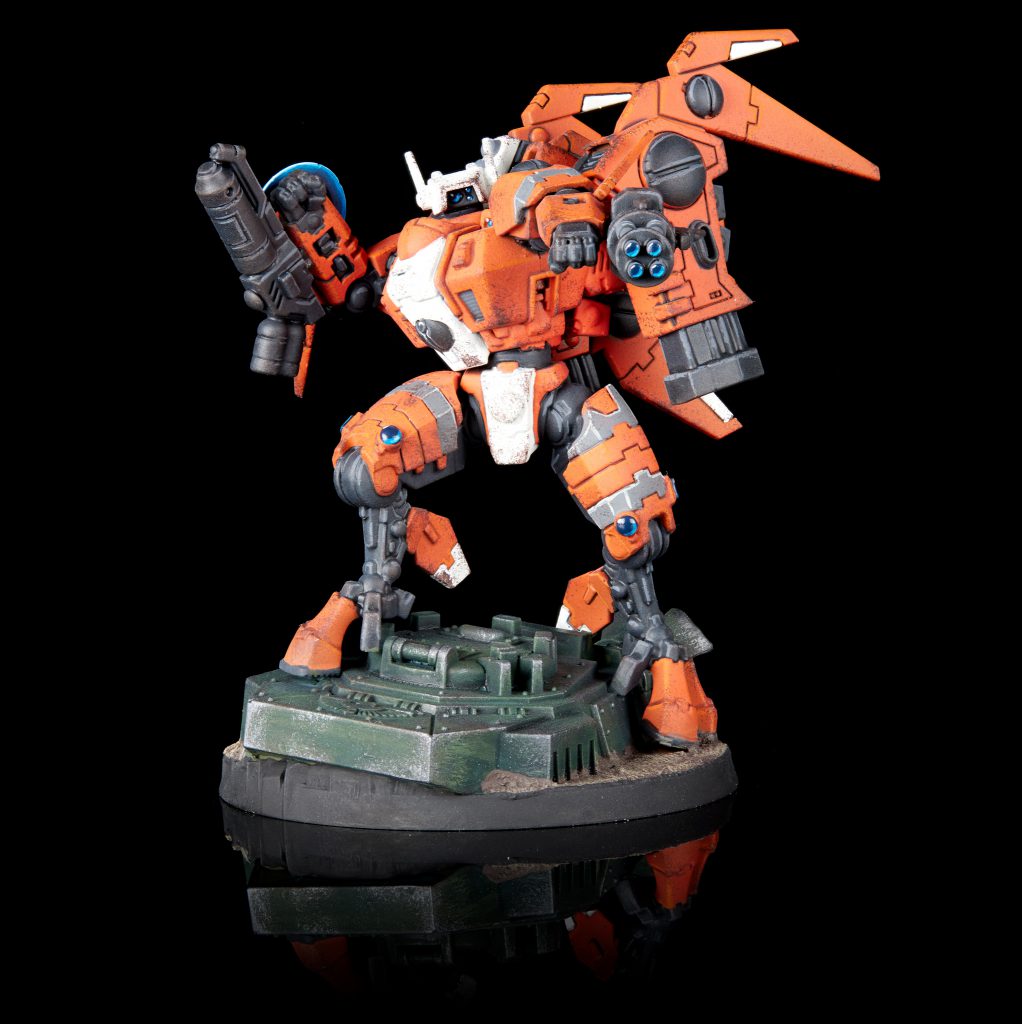
A lot of this section is going to be about Crisis suits and those who lead them. Kicking off with the various Crisis-sixes Commanders:
- Farsight gains +2 wounds, a 2+ save, and the rule that once per battle round his unit can be targeted by a stratagem for 0CP, and even if you used that stratagem already. He also keeps his 24” plasma shots, instead of dropping to 18” like everyone else. What a guy.
- Stating that again, for the people in the back: Plasma Rifle nerfed from 24″ to 18″.
- The Crisis Commander is gone, leaving only Enforcers and Coldstars.
- Cyclic Ion Blasters are added to the list of weapons that Commanders cannot take more than one of.
And now, Crisis Suits themselves. These have been split into three different datasheets, each with a restricted set of weapon options and suit upgrades, and each sporting a datasheet ability to make them excel in particular situations. They’re also all locked to three models.
- Crisis Sunforge Battlesuits have 2 fusion blasters each. Each time a ranged attack is made against a monster or vehicle unit, you can reroll wounds and damage rolls. This obviously does very violent things to big targets. They got the shield generators in the separation, so have 4+ Invulnerable saves, allowing them to take a punch back.
- Crisis Fireknife Battlesuits start with a Missile pod and a plasma rifle, with the option to swap either one to double-up on the other. Reroll 1s to hit on ranged attacks, unless the target unit is at starting strength, in which case it’s full rerolls. They have Weapon Support Systems, so can ignore modifiers to hit rolls. No invulnerable save. Great synergy with Mont’ka, as hit re-rolls help you get more Lethal Hits through.
- Crisis Starscythe Battlesuits have a Burst Cannon and Flamer, with similar options as above to double-up on either gun. Gain +1 AP on ranged attacks against non-monster non-vehicle targets. Stacking with Retaliation Cadre, this can push Burst Cannons to S6/AP-2. They get Battlesuit Support Systems, so can fall back and shoot. No invulnerable save.
In addition to that, you can no longer take duplicates of Drones, so expect most units to start sporting three gun drones on top of a shield each.
Wings: This, obviously, sounds pretty rough on paper, and it clearly is in some ways (and sucks if you’ve painstakingly assembled 18 CIBs for your big block). However, it’s worth saying that the datasheet abilities are genuinely great here, and that while final points are obviously pending, the printed points for these are substantially lower than Crisis currently are in the MFM, so if that sticks you get more suits in a MSU-style list.
After that, here are the non-Crisis changes. This is pretty much all of them, and it’s not a ton:
- Stealth Battlesuits: Forward Observers now grants rerolling 1s to hit and wound for their Guided unit when Observer-ing with this unit. These were already the go-to for spotting and they’re even better at it now.
- Strike Team gains Suppression Volley instead of Overwatching on 4s. An enemy infantry unit hit by them is -1 to hit until the start of your next turn. Still unlikely to see much use over Breachers
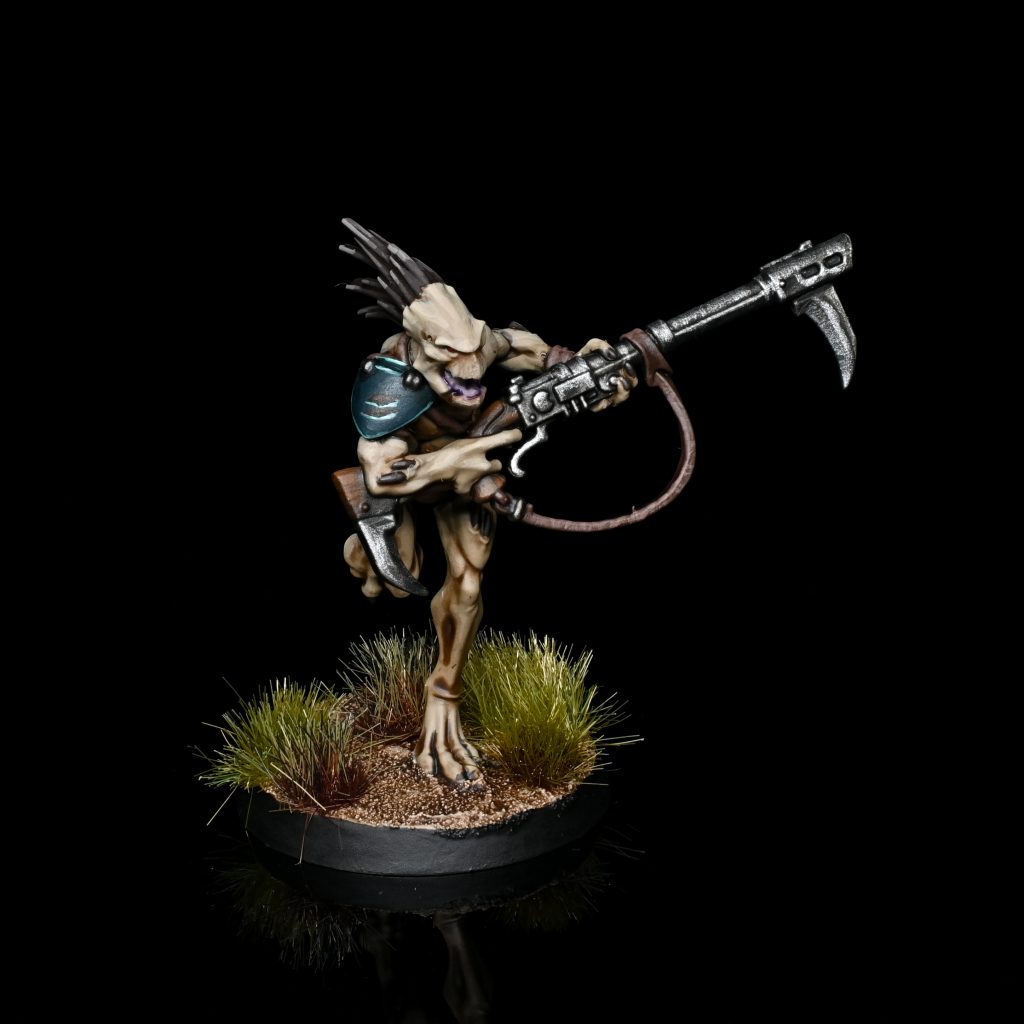
- Kroot Carnivores gain Sticky objectives datasheet rule. This is a pretty clear upgrade, and makes them a useful generic utility piece.
- Kroot Hounds get a big overhaul, trading out their worthless melee buff for two much better abilities – Advance/Charge if they’re within 6” of a Kroot INFANTRY unit at the start of the Charge Phase, and +1OC within 12” of a Kroot CHARACTER. The former makes them more efficient harassment tools in some situations, and the latter lets you sometimes actually take an objective with them if you string out, helping with their role as utility chaff.
- Skyray seeker missile rack gains twin-linked. Neat, and makes them incredibly strong into enemy FLY units, being on full hit and wound re-rolls all the time. Also means you can safely use the re-roll from their Targeting Array on a hit without worrying about saving it.
- Missile Drones are down from AP-2 to AP-1. Not going to feign surprise here, as it pulls them in line with the rest of the missile pods in the book.
- Tactical Drone Squads are gone. It took us several days to even notice this, which tells you how important it is.
- Aun’va, Aun’shi, and Longstrike, also gone. If you want a fourth railgun now you need to track down the fortification kit, but you probably didn’t want that anyway. This leaves Darkstrider, Farsight, and Shadowsun as the only named characters in the codex.
New Ways to Use Units
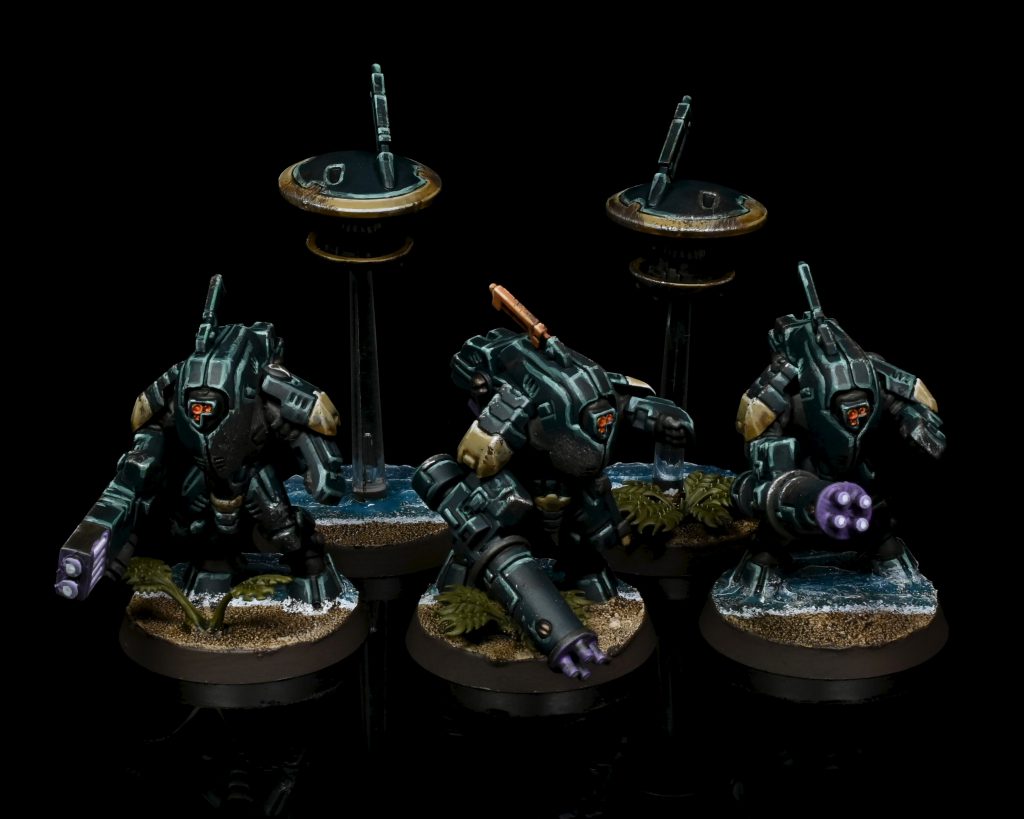
- RIP to Cyclic Ion Blasters. Get absolutely stunted on. They’ve been completely removed as an option on Crisis Suits, and are limited to one per model on Commanders. This will have a massive impact on how you use any unit on a Crisis or Commander chassis.
- Crises in general, hoo boy. I’ve made my peace with the changes and I think this might be better for the state of the game, and probably even good for the T’au player who invested heavily in the Crisis-based portfolio. Fixed loadouts were inevitable absent a re-cut of the sprues in the box, and were handled better than we had perhaps feared, with the datasheet abilities still doing a lot to differentiate them, while being harder to Create Jank than the old hardpoint system allowed. It’s different as hell though.
- Despite not being changed at all, the Enforcer Commander might have a new lease on life. The Coldstar is still probably better, but when two thirds of your Crises Suit no longer have an invulnerable save, and effectively drop a wound because they can’t double-up on shield drones anymore, being able to ignore a pip of AP suddenly seems far more attractive. Putting them in a Mont’ka detachment and giving them Assault that way also balances out some of the Coldstar’s advantages. The other factor in the Enforcer’s favor is simple math: the codex goes from one Crisis sheet to three, and three Commanders down to two, so you’re more likely to flat run out of Coldstars.
How They Will Play
Richard: With the new T’au Empire Codex, the army will play a heavy MSU (multiple small units) style with a lot of units on the table all working together to destroy key enemy targets turn after turn. This army is fast and nimble, ready to strike exactly where it is needed most, while preserving other resources to act as a follow-up salvo. Both the Retaliation Cadre and Mont’Ka will want to get up close and personal with many medium to short range weapons carefully calibrated by the Earth Caste engineers.
Mont’Ka will focus on using Breachers and Pathfinders to do damage at the same time as move blocking and potentially tying things up in combat. While the Cadre will overload enemies with a lot of durable vehicle chassis that can deal a lot of damage up close and personal.
Richard’s lists below are intended to show off what these can do!
Wings: Go wide and shoot things. This was kind of already what a lot of T’au players ended up doing, but it is now the plan for the empire, especially as both new “traditional” detachments support it very well. Smaller, cheaper Crisis units give you an additional building block for lists of this type, and the new Kroot Trail Shaper helps provide you some very flexible early disruption, helping engage on your terms.
Example Army Lists
Army time – two each from Richard and Wings
As mentioned at the start – we’ve built these based on current MFM points for units where the entry hasn’t changed, and what’s in the book for new units.
Richard’s Retaliation Cadre

Commander Farsight, Warlord 90
Coldstar Commander, Starflare Ignition System, Cyclic Ion Blaster, 3x Fusion, 2x Shield Drone 130
Darkstrider 60
10 Kroot Carnivores 55
10 Kroot Carnivores 55
10 Kroot Carnivores 55
3x Stealthsuits, Fusion, Marker Drone, Shield Drone, Battlesuit Support System 60
3x Stealthsuits, Fusion, Marker Drone, Shield Drone, Battlesuit Support System 60
3x Stealthsuits, Fusion, Marker Drone, Shield Drone, Battlesuit Support System 60
3x Crisis Sunforge Battlesuits, 6x Fusion, 3x Gun Drones, 3x Shield Drones 160
3x Crisis Sunforge Battlesuits, 6x Fusion, 3x Gun Drones, 3x Shield Drones 160
3x Crisis Sunforge Battlesuits, 6x Fusion, 3x Gun Drones, 3x Shield Drones 160
Ghostkeel, Cyclic Ion Raker, Twin Fusion, Battlesuit Support System 160
Riptide, Ion, SMS 165
Riptide, Ion, SMS 165
Riptide, Ion, SMS 165
2 Tetras 80
2 Tetras 80
2 Tetras 80
Richard’s Mont’Ka
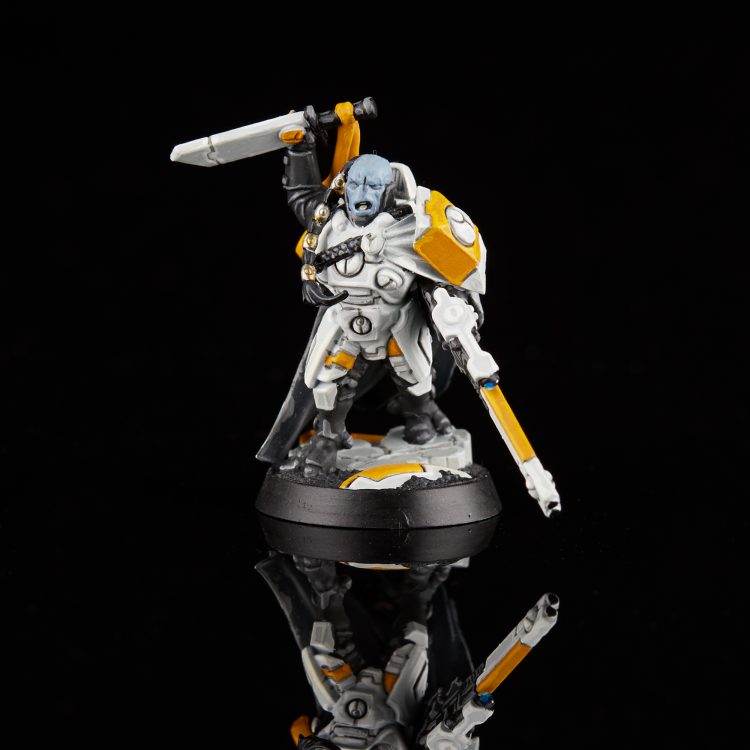
Commander Farsight, Warlord 90
Cadre Fireblade, Strategic Conqueror, 2x Gun Drones 55
Cadre Fireblade, Strike Swiftly, 2x Gun Drones 65
Cadre Fireblade, 2x Gun Drones 40
Darkstrider 60
10 Breacher Team 90
10 Breacher Team 90
10 Breacher Team 90
10 Breacher Team 90
10 Pathfinder Team, Recon Drone, Gun Drone, 3x Ion Rifles, Grenade Launcher 90
Devilfish 75
Devilfish 75
Piranha, Fusion, 2x Seeker Missiles 55
3x Crisis Sunforge Battlesuits, 6x Fusion, 3x Gun Drones, 3x Shield Drones 160
3x Crisis Sunforge Battlesuits, 6x Fusion, 3x Gun Drones, 3x Shield Drones 160
3x Stealthsuits, Fusion, Marker Drone, Shield Drone, Battlesuit Support System 60
Riptide, Ion, SMS 165
Riptide, Ion, SMS 165
Riptide, Ion, SMS 165
2 Tetras 80
2 Tetras 80
2000
Wings’ Mont’ka
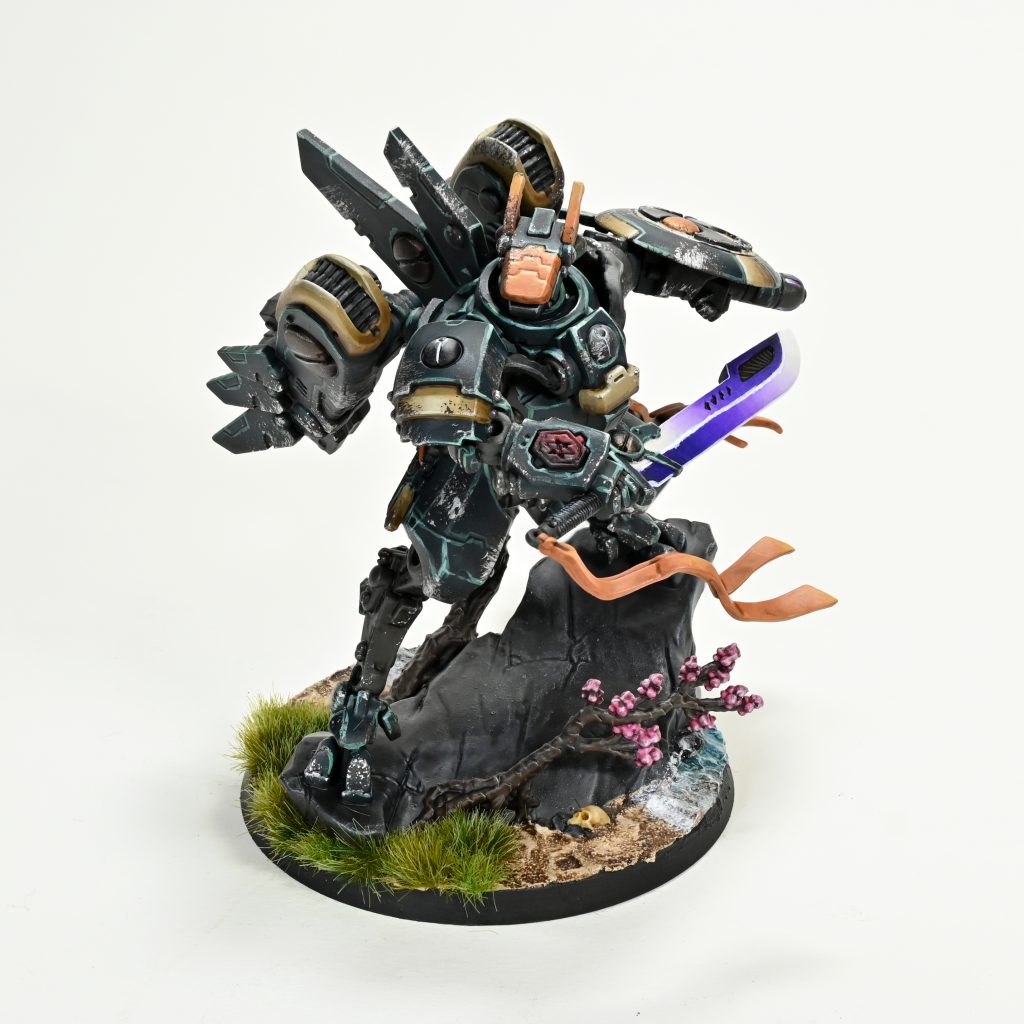
Characters
Farsight – 90
Enforcer Commander, 4x Missile Pod, Strike Swiftly – 115
Enforcer Commander, 4x Missile Pod, Exemplar of the Mont’ka -100
Fireblade – 40
Fireblade – 40
Kroot Trail Shaper – 55
Infantry
Kroot Carnivores – 55
Farstalkers – 70
Farstalkers – 70
Breachers – 90
Breachers – 90
Stealth Suits, Fusion, Marker Drone, Shield Drone, Battlesuit Support System – 60
Stealth Suits, Fusion, Marker Drone, Shield Drone, Battlesuit Support System – 60
Other
Fireknife Battlesuits, Missile Pods – 165
Fireknife Battlesuits, Missile Pods – 165
Sunforge Battlesuits – 160
Riptide, Ion, SMS – 165
Sky Ray, 2x SMS – 130
Sky Ray, 2x SMS – 130
Devilfish – 75
Devilfish – 75
I’m a big fan of the Fireknife Battlesuits in Mont’ka, and I think sticking missile Enforcers with them gives you nice, flexible platforms to work with. I also really like the overwatch threat they present – because you’re going to have Lethal Hits in Mont’ka, if they Overwatch a target at its starting strength, and thus have their re-rolls on, you can expect six missile Wounds from a full unit, which is nothing to sniff at, and particularly problematic for something like Ork Nobz. Having Strike Swiftly also means you can tune their position very effectively out the gate. Also helping with that are the two Farstalker units, one with a Trail Shaper, giving you incredible Infiltrate flexibility.
Wings’ Kroot
You know I had to do it to them.
Characters
Shadowsun, Warlord – 100
Coldstar Commander, 3x Fusion, 1x Shield Generator, 2x Shield Drones – 110
Kroot Trail Shaper – 55
Kroot Trail Shaper, Nomadic Hunter – 75
Kroot Lone-Spear, Kroothawk Flock – 120
Kroot War Shaper, Dart Bow and Tri-Blade, Root-carved Weapons – 70
Indantry
20 Kroot Carnivores – 110
20 Kroot Carnivores – 110
20 Kroot Carnivores – 110
20 Kroot Carnivores – 110
20 Kroot Carnivores – 110
20 Kroot Carnivores – 110
Kroot Hounds – 40
Farstalkers – 70
Farstalkers – 70
Other
Sunforge Battlesuits – 160
Sky Ray, 2x SMS – 130
Sky Ray, 2x SMS – 130
Sky Ray, 2x SMS – 130
Tetras – 80
I legitimately think this looks pretty good – that’s so many (potentially recycling) bodies to chew through, great pressure on the board with the scouting, and much better anti-tank support than you get in some other horde lists – the numerous built-in re-rolls that both the Sky Rays and Sunforges have means that they don’t need much detachment support to do their work, and really help ensure that things like a Gladiator Reaper can’t just mow down your bird bois with impunity.
Final Thoughts
 Richard: This book is a clear push towards more MSU styles for T’au, which overall is a healthier style of gameplay and frankly more fun as complex trades and decisions happen each turn. As someone who has to rip a bunch of cyclic ion off my models, I wish that the other weapons received a bit more love, especially outside of Retaliation Cadre. But with the January dataslate changing Grey Knight dreadknight weapons, there is hope in the future for the non-competitive choices.
Richard: This book is a clear push towards more MSU styles for T’au, which overall is a healthier style of gameplay and frankly more fun as complex trades and decisions happen each turn. As someone who has to rip a bunch of cyclic ion off my models, I wish that the other weapons received a bit more love, especially outside of Retaliation Cadre. But with the January dataslate changing Grey Knight dreadknight weapons, there is hope in the future for the non-competitive choices.
Overall, I’m very happy with the two new detachments, as Retaliation Cadre and Mont’Ka both help to solve one of the big pain points for T’au, which was that the key rules of Kauyon only kicked in from turn 3 onwards. Tenth Edition is only a 5 turn game and turns two and three are the most critical turns in most matchups, so not having key rules active against any sort of threat overload type army was enormously tricky for most T’au players to combat. I think the Breacher-heavy board control style that I’ve been pioneering massively appreciates Mont’Ka, whereas MSU battlesuits will prosper in both, but even more so in Cadre.
T’au, as any army, was great in the hands of a top player, but a middling army at best in the hands of the average player. I think, and hope, that this new Codex will give those players a boost against their friends and local competitors so every game doesn’t feel like a panic-inducing pressure cooker to not fall too far behind on points before you could kill the opponent. Top players on the other hand are going to love this book and take full advantage of the new rules and potential combos available here.
![]() Greg: I like this. It feels right.
Greg: I like this. It feels right.
I’ll be honest, I didn’t really read the Kroot parts of this book. I’m sure they’re fine, but that’s not why I play T’au: I’m here for the Gundams. In that light, there isn’t really a bad detachment choice in here: Kauyon hasn’t really changed much – it wasn’t bad before – and Mont’ka looks like it could put in work, but I zeroed in pretty hard on the Retaliation Cadre. Aside from the detachment rule being great for almost every Battlesuit (sniping Broadsides don’t see much benefit here), and the suite of generally solid stratagems, it’s just nice to have a buff that applies across the entire game for once.
As a certain type of T’au player (bad), having the extra S/AP when you (I) mess up positioning and get stuck shooting in close combat will help a lot for getting your (my) suits clear. Would it have been nice to have more detachment options? Yeah, sure. But the odds that there’d be at least one stinker in there to pad out the page count are pretty high, and I’d rather get three absolute heaters than spread all the quality rules in a thin smear across five or six mediocre ones.
The focus here was clearly on a few things: new detachments, fleshing out the Kroot, and fixing the CIB Crisis bomb. Little attention was paid to anything else, and by that metric I think you have to consider this a rousing success. The new detachments are great, and now that my initial panic attack has subsided, I think I like the new Crisis rules. It’s different, but I think I like it. It’s almost all downside – no double shield drones, most types of Crisis lost their 4++, all types lost a hardpoint, and units are capped at 3 models. This is going to upset a lot of people.
But.
If there is a Content Creator Advantage at play here, it’s just that I’ve got a headstart on processing the stages of grief. With that in mind, the Crisis datasheet abilities are really, really good, fire and fade got cheaper, they benefit from the new detachment rules, and if that weren’t enough to make them as good as before model-for-model you can always just take more of the things. Does this make up for the nerfs listed above? I don’t know. Again, we come back to not knowing if these are the real points or not, which is going to be the real decider on whether this sucks or rules.
That said, I was hoping for more datasheet changes. I don’t think it’s a lazy book, exactly, but there’s weird stuff like a page in the fluff that lays out what all the different support systems are, and then in the rules they’re still flattened to “Weapon Support” and “Battlesuit Support”. The drones fluff page shows a shielded missile drone, but then in the rules Riptides can still only take regular missile drones. That’s not unique to this codex – Dark Angels did the same thing with Talonmasters – but it belies a lack of attention being paid to most of the book, with most of the index simply carrying forward. Maybe this is an early-edition problem and later codexes will be more inventive: only time will tell.
It’s probably fair to argue that the T’au didn’t need help, and the few tweaks that were made are generally good (the Stealth ability, Farsight), but I miss having AP on pulse rifles, and some of the Crisis guns remain anemic other than in a Retaliation Cadre and at point-blank range. It’s definitely not a bad codex – it’s flat out better than the Index – and I’m excited to play more T’au, but unless you really like Kroot and have magnetized all your Crises, the most important pages for you are going to be the detachment rules – most of the data cards, including virtually all the stat blocks for models and weapons, are unchanged.
![]() Kais: Echoing a lot of Greg’s sentiment I also didn’t read the Kroot pages. T’au and their Aux have always been a bit at odds for me between lore and implementation but if these changes and additions satisfy the Kroot fans then I’m here for it!
Kais: Echoing a lot of Greg’s sentiment I also didn’t read the Kroot pages. T’au and their Aux have always been a bit at odds for me between lore and implementation but if these changes and additions satisfy the Kroot fans then I’m here for it!
As the resident Gunship fan here there’s some stuff to really like; Mont’ka is a very aggressive detachment option for an army full of Accelerator Burst Cannons speeding at the enemy at full throttle. The addition of twin linked to the Skyray rack is very unexpected and welcome! Saying all of that, it’s not like my list is devoid of Battlesuits, usually maxing out on Stealth just because of how much I love them. Something even more tempting with their improved observer ability. I do feel that all of the detachments have pretty significant restrictions though; Mont’ka, and Kauyon being limited to 3 turns, Retaliation being limited to Battlesuit, and the Hunting Pack only benefitting Kroot. It does still seem to me like there’s the “cohesive force” detachment missing that benefits a mixed arms approach for an entire battle. Saying all of that I will almost certainly be switching to Mont’ka and drifting my mechanised army around the battlefield as nature intended.
Regarding Crisis: I get it fundamentally. A unit as customisable as Crisis in a free wargear system is just a balance nightmare. It’s very amusing that T’au Battlesuit support systems got a whole page of lore and images of what they look like that actually resemble the model parts in this book considering it’s still just Shield, Weapon Support, and Battlesuit support we can (sometimes) choose from. Losing CIBs was long overdue, a fix for what might well have been an oversight in 8th edition; I seriously doubt GW expected people to buy one commander kit per CIB they wanted to field. I like the new datasheets, if I had one change though I’d unlock the wargear choice, that element of it just seems a bit too arbitrary. Locking shields to one sheet in an army with a now surprisingly small number of Invuls is rough. Will I find space for Crisis going forward though? They’re one of my favorite models much to the surprise of many that know me but they’ve historically struggled to retain a spot on my lists mostly because, well, Gunships are just too cool. If the points for T’au remain quite as low as they’ve been for a while now then Crisis will almost definitely secure a spot, if just for the meme of some Crisis Starsythes with their 6 Pulse Blaster shots that will be S6 Ap-2 within 6” if part of a Retaliation Cadre. I’ll really miss Crisis Commanders though; shelving one of my oldest and most used models is quite a blow.
In summary this codex does what it sets out to: It expands T’au detachments, it introduces a lot of new Kroot, it makes an attempt to balance Crisis in 10th’s not quite power-level system. It makes a few uncharacteristically small changes here and there. How it all works together will be entirely dependent on the real points when we eventually see those.
![]() Wings: This book is weird, in that I think it’s deeply flawed but also pretty good (with a big old asterisk over points). There’s a bunch of datasheets that should have changed and the internal balance is really off, but there are some brutally potent speedy shooting lists available in it. While big Crisis units were still doing fine, many successful T’au players had already pivoted to a more go-wide shooting plan, and this book supports that extremely well, particularly the Mont’ka detachment, and for those lists I think the lower price on Crisis units (now they no longer have to be costed round “whoops all cyclic”) is going to end up being a massive asset. I also think there’s a very real chance that the Kroot detachment spawns a real list for the kind of player that enjoys moving 150 models around for a weekend, and if you’re one of the vocal minority who have been clamouring for more Kroot since 3rd Edition, enjoy.
Wings: This book is weird, in that I think it’s deeply flawed but also pretty good (with a big old asterisk over points). There’s a bunch of datasheets that should have changed and the internal balance is really off, but there are some brutally potent speedy shooting lists available in it. While big Crisis units were still doing fine, many successful T’au players had already pivoted to a more go-wide shooting plan, and this book supports that extremely well, particularly the Mont’ka detachment, and for those lists I think the lower price on Crisis units (now they no longer have to be costed round “whoops all cyclic”) is going to end up being a massive asset. I also think there’s a very real chance that the Kroot detachment spawns a real list for the kind of player that enjoys moving 150 models around for a weekend, and if you’re one of the vocal minority who have been clamouring for more Kroot since 3rd Edition, enjoy.
This has been genuinely fascinating to pick over, and I’m equally fascinated to see how it does, and still not super sure how I feel about it overall. On the one hand, it has so many obvious flaws, but on the other the Mont’ka detachment looks like so much of a blast to play that I can’t really hate it, and I think a real contender for top tier play. They do also pass the crucial test of feeling something I’d enjoy playing, so ultimately I guess this ends up as a qualified success at minimum.
That’s it for our review – thanks again to Games Workshop for providing us with a review copy.


